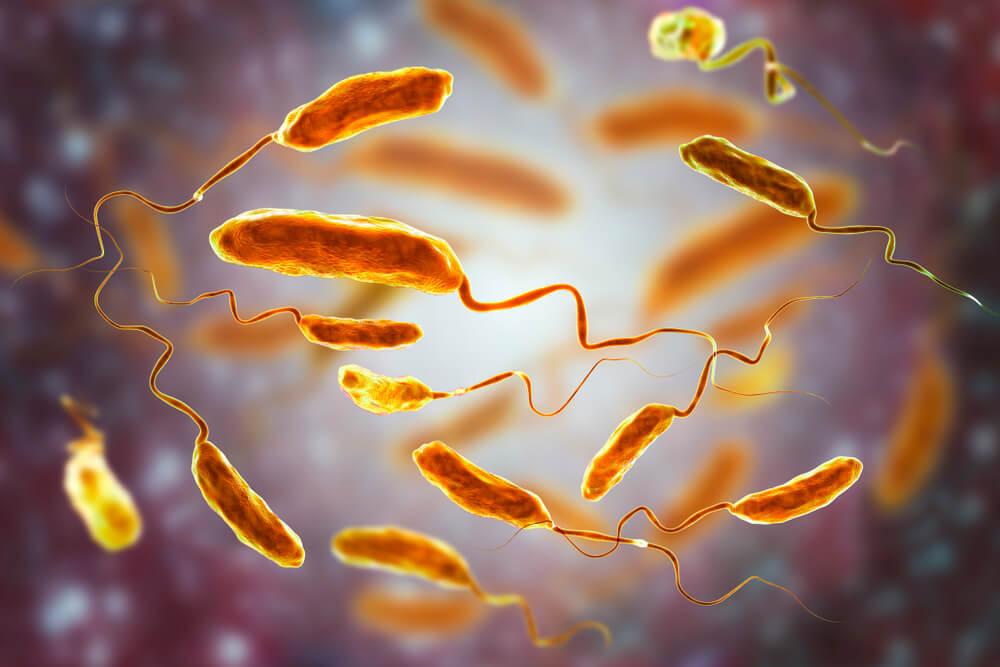The number of carnivorous bacteria has increased in the waters of the United States: contact with them is deadly
The amount of coastal waters that can harbor harmful Vibrio bacteria has increased by 56%. One of the species is carnivorous, reports INSIDER.

Photo: Shutterstock
Rising sea temperatures are expanding the habitat of the Vibrio bacteria found in warm brackish water.
The proportion of the coastline that Vibrio bacteria can thrive on has increased 1980% since the 56s.
This is one of the many factors that cause climate change to worsen human health.
The amount of coastal water that harmful bacteria can live in has increased 56% in the past few decades, according to a report released Wednesday.
This family of bacteria, called Vibrio, is found in salty or brackish coastal waters, including the United States and Canada. The infection caused by the bacteria, vibriosis, is usually spread by eating raw or undercooked seafood or by contacting a wound with seawater contaminated with the bacteria.
Mild cases resolve in about three days, but Vibrio can also cause serious illnesses, including gastroenteritis, life-threatening cholera, dangerous infections, and sepsis.
One type of Vibrio bacteria, Vibrio vulnificus, is called carnivorous because the bacteria can aggressively destroy body tissue. These infections, although rare, often require intensive care or amputation. They can be fatal, killing one in five people infected, usually within two days, according to the Centers for Disease Control and Prevention.
The bacteria infect the skin and tissues underneath it (the fascia that surrounds muscles; nerves, fat, and blood vessels), often spreading rapidly - sometimes at a rate of about an inch (2,5 centimeters) per hour - leading to toxic shock syndrome.
A person who has contracted the bacterium may experience nausea, diarrhea, chills, and a fever. As the disease progresses, the skin becomes bright red, swollen and shiny, blistered and, in the worst case, open wounds.
Symptoms usually begin a few hours after the injury and may include severe pain or soreness, similar to a “pulled muscle”. According to the Centers for Disease Control and Prevention (CDC), puffiness with red or purple spots may appear on the skin.
The reasons why Vibrio is becoming an increasing threat is because sea surface temperatures are rising and seawater is becoming saltier. This is one of many disturbing findings from The Lancet's sixth annual report on health and climate change. In it, researchers from academia and the United Nations tracked 44 indicators of health impacts associated with climate change.
Their conclusion: climate change worsens global health and exacerbates existing health and social inequalities.
“As the COVID-19 crisis continues, every country is facing some aspect of the climate crisis,” Anthony Costello, executive director of the report, said in a statement, adding: “The Lancet Countdown report contains more than 40 indicators and too many they are alarming."
The connection between rising sea temperatures and waterborne diseases such as vibriosis is alarming. Coastal habitats for bacteria at certain latitudes in the northern hemisphere have increased from 7% in the 1980s to 10,9% in 2020, according to the report.
On the subject: An American woman has been sick with COVID-19 for a year: what is the reason and who is at risk of a protracted coronavirus
Most bacterial infections occur in the summer.
Each year in the United States, about 80 people contract vibriosis and 000 die from these infections. Since Vibrio bacteria thrive in warm water, 100% of these infections occur between May and October, according to the CDC.
The bacteria are not just a threat to humans: in April, after hundreds of dead fish were washed ashore in New Jersey, the bacterium Vibrio was the culprit, according to the Associated Press.
“It is suspected that if there are wider temperature swings in the fall and spring, this could worsen the effects of these mortality events,” the state Department of Environmental Conservation said.
While 100 human deaths a year is a low cost from a public health perspective, rising sea temperatures could lead to more widespread Vibrio - and likely infections and deaths caused by the family of these bacteria.
In particular, the amount of habitable coastline for Vibrio bacteria has increased from 1,2% to 5,1% in the northeast Atlantic and from 1,2% to 5,1% in the northwest Pacific between the 1980s. through 2020, according to the Lancet report. During the same period, the area inhabited by bacteria in the Baltic countries increased from 47% to 82%.
Other important indicators highlighted in the Lancet report include an increased potential for mosquito-borne disease and the relationship between extreme heat and poor mental health, including suicidality.
You may be interested in: top New York news, stories of our immigrants and helpful tips about life in the Big Apple - read it all on ForumDaily New York.
Costello said that when countries gather next month to negotiate the COP26 climate in Scotland, he thinks this could be an opportunity to simultaneously respond to climate change and the impact of COVID.
“We have a choice. The recovery from COVID-19 could be a 'green' recovery that puts us on a path to improving people's health and reducing inequalities, or it could be a business as usual recovery that puts us all at risk,” he said.
Read also on ForumDaily:
How not to eat breakfast so as not to destroy your immunity: advice from nutritionists
Walmart and Macy's Already Announce Black Friday Discounts: Best Promotional Deals
Pension in the USA: three important innovations that await us in 2022
Do you want more important and interesting news about life in the USA and immigration to America? — support us donate! Also subscribe to our page Facebook. Select the “Priority in display” option and read us first. Also, don't forget to subscribe to our РєР ° РЅР ° Р »РІ Telegram and Instagram- there is a lot of interesting things there. And join thousands of readers ForumDaily New York — there you will find a lot of interesting and positive information about life in the metropolis.











